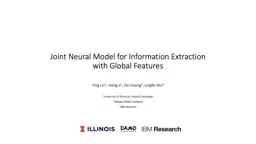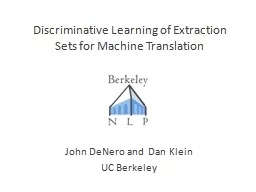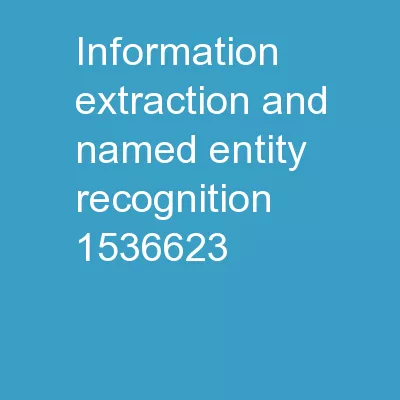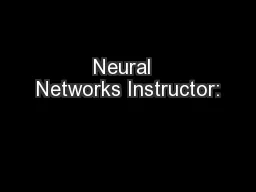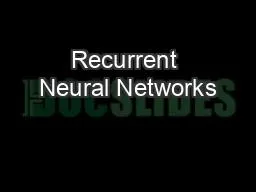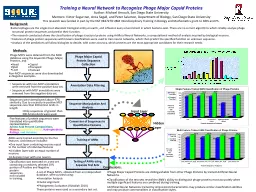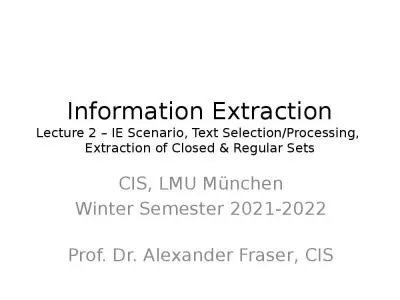PPT-Joint Neural Model for Information Extraction with Global Features
Author : genderadidas | Published Date : 2020-11-06
Ying Lin 1 Heng Ji 1 Fei Huang 2 Lingfei Wu 3 1 University of Illinois at UrbanaChampaign 2 Alibaba DAMO Academy 3 IBM Research Motivation Pipelined models
Presentation Embed Code
Download Presentation
Download Presentation The PPT/PDF document "Joint Neural Model for Information Extra..." is the property of its rightful owner. Permission is granted to download and print the materials on this website for personal, non-commercial use only, and to display it on your personal computer provided you do not modify the materials and that you retain all copyright notices contained in the materials. By downloading content from our website, you accept the terms of this agreement.
Joint Neural Model for Information Extraction with Global Features: Transcript
Download Rules Of Document
"Joint Neural Model for Information Extraction with Global Features"The content belongs to its owner. You may download and print it for personal use, without modification, and keep all copyright notices. By downloading, you agree to these terms.
Related Documents

